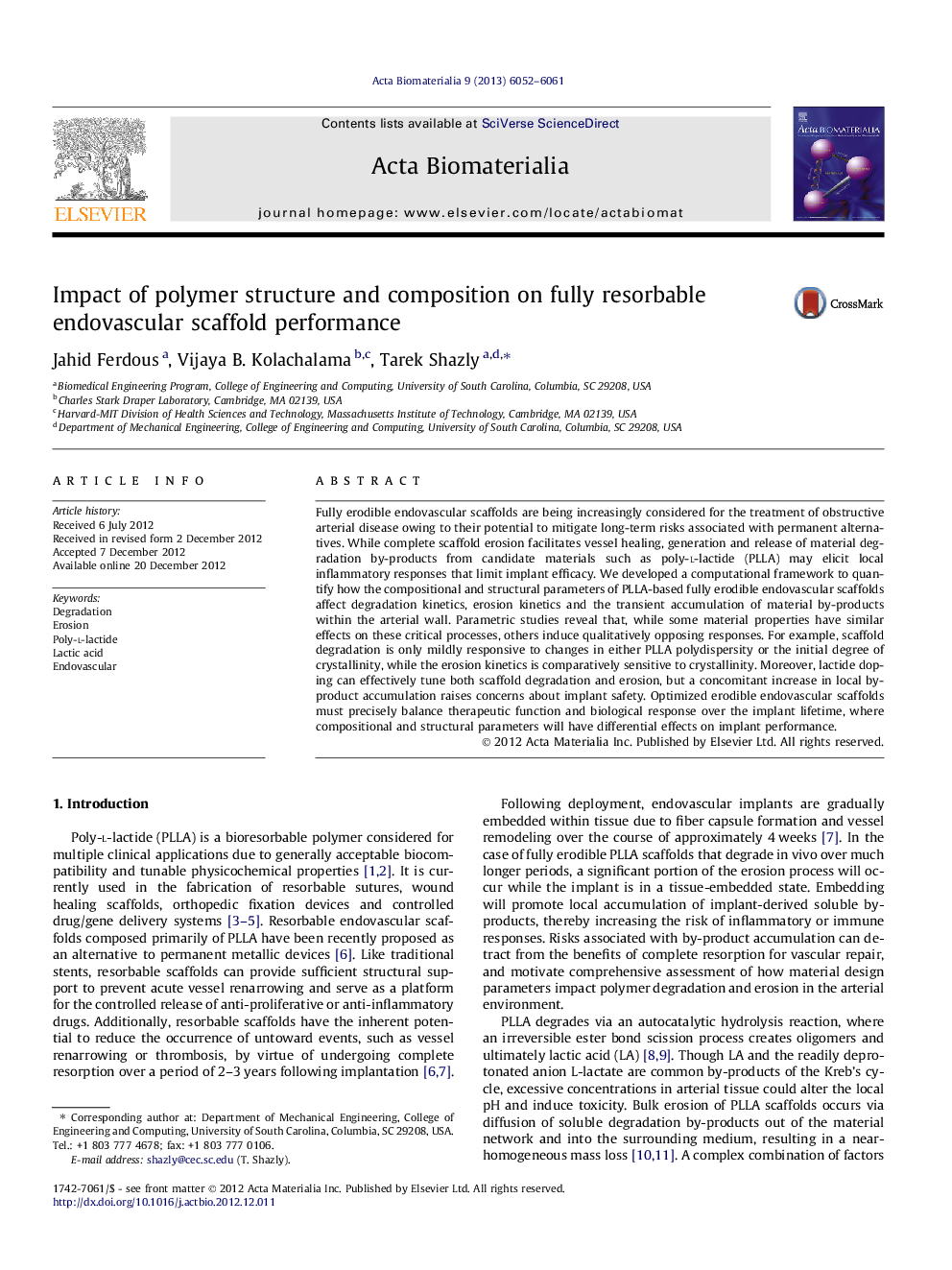| Article ID | Journal | Published Year | Pages | File Type |
|---|---|---|---|---|
| 10159851 | Acta Biomaterialia | 2013 | 10 Pages |
Abstract
Fully erodible endovascular scaffolds are being increasingly considered for the treatment of obstructive arterial disease owing to their potential to mitigate long-term risks associated with permanent alternatives. While complete scaffold erosion facilitates vessel healing, generation and release of material degradation by-products from candidate materials such as poly-l-lactide (PLLA) may elicit local inflammatory responses that limit implant efficacy. We developed a computational framework to quantify how the compositional and structural parameters of PLLA-based fully erodible endovascular scaffolds affect degradation kinetics, erosion kinetics and the transient accumulation of material by-products within the arterial wall. Parametric studies reveal that, while some material properties have similar effects on these critical processes, others induce qualitatively opposing responses. For example, scaffold degradation is only mildly responsive to changes in either PLLA polydispersity or the initial degree of crystallinity, while the erosion kinetics is comparatively sensitive to crystallinity. Moreover, lactide doping can effectively tune both scaffold degradation and erosion, but a concomitant increase in local by-product accumulation raises concerns about implant safety. Optimized erodible endovascular scaffolds must precisely balance therapeutic function and biological response over the implant lifetime, where compositional and structural parameters will have differential effects on implant performance.
Related Topics
Physical Sciences and Engineering
Chemical Engineering
Bioengineering
Authors
Jahid Ferdous, Vijaya B. Kolachalama, Tarek Shazly,
